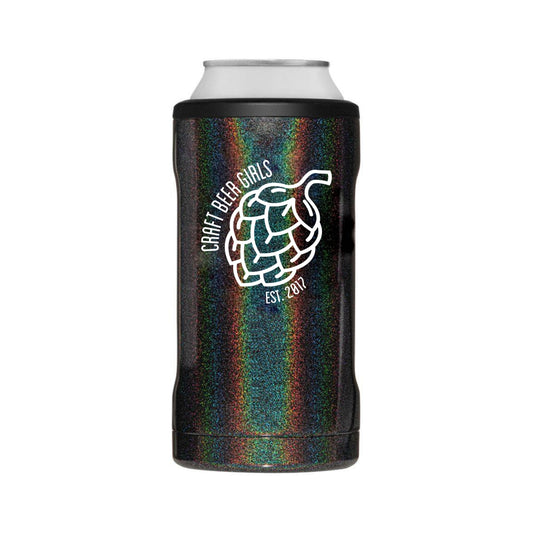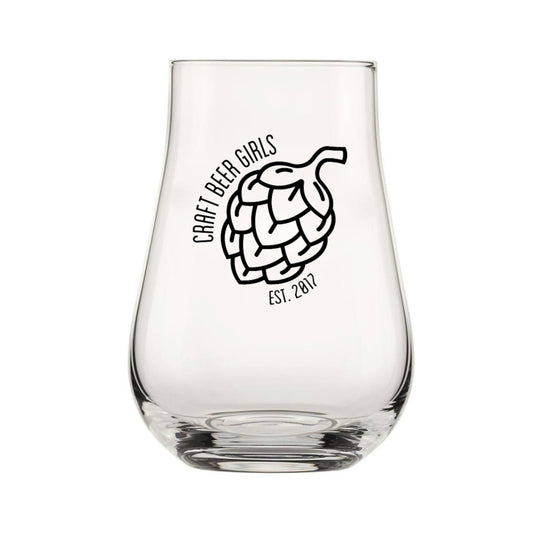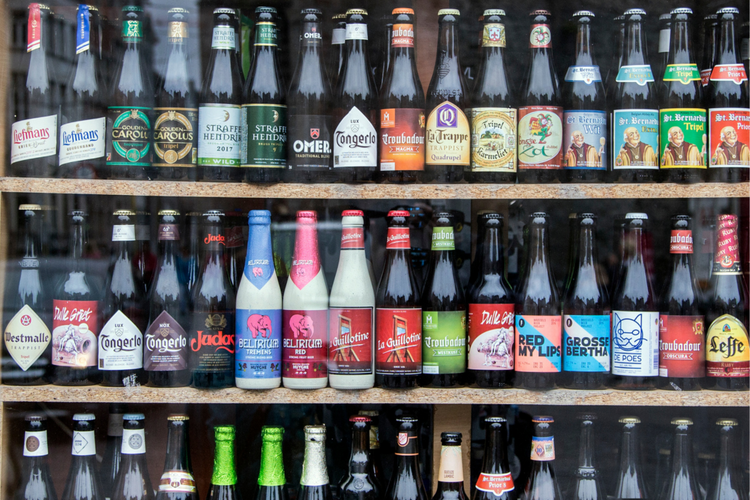
Introduction
In today's diverse global economy, various industries have garnered reputation over the years as predominantly male domains. These male-dominated industries, including but not limited to technology, construction, finance, and brewing, have been marked by a conspicuous imbalance in gender representation. This imbalance has been a point of contention, leading to significant discussions on the imperative need for diversity and inclusion in all fields.
It is important to understand that the term 'male-dominated' isn't a casual classification. It is a profound depiction of an existing societal norm that is gradually being questioned, dissected, and reformed. Male-dominated industries are sectors where men constitute a significant majority of the workforce. From CEOs to entry-level employees, men appear to hold the fort. This picture, however, is beginning to shift. As society becomes more aware of gender disparities and their harmful implications, movements and organizations aiming to create balance have come into existence.
This balance is especially crucial considering the benefits that gender diversity brings to an industry. Studies have shown that diverse teams are more innovative, make better decisions, and, in many instances, are more profitable. Despite these clear benefits, many industries are still grappling with achieving balanced gender representation. One tool that has proven highly effective in combating this issue is the emergence of women-centric organizations.
These organizations are platforms that advocate for gender equality and women's rights within their respective industries. They are driven by a clear mandate: to uplift, support, and advocate for women's growth and success in their chosen fields. These organizations are challenging the status quo, and through their persistent efforts, they are helping to break down barriers and pave the way for a more inclusive and equal future.
Women-centric organizations operate across a broad spectrum of industries. They focus on areas like networking, mentorship, advocacy, professional development, and even funding. They empower women to aspire to and attain leadership roles, thereby creating a significant impact on their respective industries. By focusing on uplifting women, these organizations bring much-needed diversity to industries traditionally dominated by men.
However, it's not just about representation. Women-centric organizations also work to create an environment conducive to women's growth and success. They actively challenge discriminatory practices and policies, pushing for reform. In addition, these organizations provide resources and tools to help women navigate their industries and grow professionally.
In this exploration of women-centric organizations in male-dominated industries, a special focus will be placed on the beer industry. The brewing industry has a long history, and like many others, it has traditionally been a male-dominated field. However, recent years have seen a noticeable increase in the number of women joining the industry, from brewmasters to company founders, signaling a shift in gender dynamics.
Despite this progress, women in the brewing industry still face significant challenges, from sexism and discrimination to a lack of representation in leadership roles. Here, women-centric organizations play a vital role. They provide support, resources, and a community for women in the industry, helping them to overcome these challenges and succeed in their careers.
This article will delve into the world of women-centric organizations, shedding light on their influence and benefits in male-dominated industries. By examining the beer industry's example, we will gain insights into the transformative power of these organizations and their potential to reshape industry norms.
As we venture through this exploration, it is our hope that you will gain a deeper understanding of the crucial role that women-centric organizations play in breaking down gender barriers in male-dominated industries. Through this lens, we will gain insight into the challenges, the victories, and the future of women in these fields, setting the stage for a more inclusive and equal world.
This topic is not just about gender equality; it's about the future of industries. It's about innovation, growth, and success. As we embrace diversity and inclusion, we invite a wealth of ideas, perspectives, and skills that can only serve to enrich our industries, making them more vibrant, inclusive, and successful. Thus, let us embark on this journey of understanding the importance of women-centric organizations in male-dominated industries and their profound impact on the beer industry.
Historical Background
Looking back at the annals of history, it's clear that women's roles in the workforce have experienced a transformative journey. This journey, like many other aspects of women's history, is intertwined with societal changes, economic needs, and the relentless struggle for gender equality. It's a tale of courage, resilience, and empowerment, which has laid the foundation for the development of women-centric organizations in various fields.
In the early 20th century, the majority of women worldwide were confined to their homes, their roles limited to caregiving and household chores. Society dictated that women were better suited for these tasks while men worked in industries and businesses. However, major global events such as the two World Wars necessitated women's involvement in various industries. Women were called upon to fill roles vacated by men who were away at war, marking a significant shift in societal norms.
Despite their significant contribution during these testing times, post-war periods often saw women being encouraged, and in many cases forced, to return to their traditional roles. Despite these setbacks, a precedent had been set. Women had proven that they were equally competent in roles traditionally held by men, and this ignited the slow but steady change in societal perceptions.
The second half of the 20th century marked a significant change as more women started pursuing education and entering the workforce. Women were not just taking on jobs; they were venturing into professional careers, many of them into industries traditionally dominated by men. This was a pivotal period, marked by civil rights movements and feminist activism, which challenged the established norms and advocated for women's rights, including their right to work and equal pay.
Nevertheless, the journey of women in male-dominated industries wasn't straightforward. They faced numerous challenges, including discrimination, lack of opportunities for advancement, and the ever-persistent gender wage gap. Despite these obstacles, women persevered. They ventured into industries such as technology, finance, and engineering, sectors previously considered 'unsuitable' for women. They were breaking stereotypes and proving their mettle, thus paving the way for future generations.
It was during this period that the seeds of women-centric organizations were planted. Women, recognizing the unique challenges they faced in these industries, began to come together to provide support and advocacy. These early organizations were often informal, characterized by small groups of women offering mentorship and advice to one another.
As the demand for such supportive networks grew, so did the scale and scope of these organizations. They started taking on a formal structure, setting objectives, and actively working towards the betterment of women in their respective industries. These early organizations laid the foundation for the modern women-centric organizations we see today.
While many of these organizations initially formed in response to the challenges women faced, they also recognized the potential benefits women brought to these industries. Women offered fresh perspectives and innovative approaches, which were increasingly being recognized as valuable in the predominantly male sectors. By advocating for women's involvement and creating spaces for their growth, these organizations were not just supporting women; they were contributing to the overall development of their respective industries.
Today, we see a plethora of such organizations spanning across various sectors. Whether it's technology, construction, finance, or brewing, women-centric organizations have taken root. They stand as powerful testament to the spirit of women in the workforce, their resilience, and their determination to break through barriers and contribute significantly to their respective fields.
The growth and evolution of these organizations have not only provided a platform for women but have also worked to change the industry landscapes. Their advocacy has influenced policy changes, pushing industries to become more inclusive. They have given women a collective voice, enabling them to demand and effect change.
The brewing industry, too, has seen the advent of such organizations. Traditionally a male-dominated field, brewing has, in recent years, witnessed a noticeable increase in women's involvement. Women-centric organizations within this industry have played a significant role in this shift. They have empowered women to take up roles as brewers, industry experts, and entrepreneurs, breaking the stereotype of beer being a 'man's drink.'
The journey of women in male-dominated industries is a testament to their resilience and determination. Women-centric organizations stand as pillars of this journey, advocating for equality, challenging norms, and shaping the future of industries. They are playing an instrumental role in shifting industry dynamics, pushing towards a more balanced and inclusive future.
As we delve deeper into the world of women-centric organizations in the following sections, we will explore the various facets of these organizations and their impact on industries, with a particular focus on the beer industry. The role and influence of these organizations extend beyond the individual women they support; they are key drivers of industry-wide change. Through the lens of history, we can appreciate the long journey and the critical role of these organizations in shaping today's industry landscapes.
Understanding Women-Centric Organizations
In the landscape of contemporary industries, women-centric organizations stand as vital platforms, playing a pivotal role in transforming the traditional norms of gender representation. As we aim to understand these organizations more deeply, it is imperative to first delineate what exactly constitutes a women-centric organization.
In the simplest terms, a women-centric organization is an entity that focuses primarily on promoting women's interests, rights, and career growth within a specific industry. The fundamental mission of these organizations is to advocate for gender equality, providing support to women as they navigate industries predominantly led and occupied by men.
These organizations come in many forms. Some may be nonprofit entities driven by advocacy, while others might be professional networks designed to connect women and provide opportunities for mentorship and collaboration. There are also those that focus more on providing resources for professional development, offering workshops, training sessions, and seminars designed to equip women with the skills they need to succeed in their fields.
The emergence and growth of these organizations represent an essential shift in the industry dynamics. Historically, women have been significantly underrepresented in several key sectors of the economy. This lack of representation was not a mere coincidence, but a reflection of deeply ingrained societal norms and biases that dictated what roles were 'appropriate' for each gender.
Women-centric organizations emerged as a response to these disparities. Recognizing the unique challenges that women faced in male-dominated industries, these organizations sought to provide a platform for women to connect, share experiences, and provide mutual support. Over time, they have evolved, expanding their goals and operations to encompass advocacy for policy changes, promoting leadership opportunities for women, and even directly influencing industry practices to be more inclusive and equitable.
These organizations play a significant role in empowering women. They give women the confidence to challenge the status quo and strive for leadership positions traditionally occupied by men. They provide mentorship and guidance, helping women navigate the unique challenges they face in their industries. They also create a sense of community, a network of support that can be instrumental in fostering a sense of belonging and motivation.
Another key aspect of women-centric organizations is their influence on industry policies and practices. By representing a collective voice for women, these organizations can effectively advocate for changes that foster a more inclusive and equal work environment. This can include policies related to recruitment and promotion, work-life balance, harassment, and discrimination.
In addition to providing support and advocacy for women, these organizations also contribute to the overall health and success of their industries. Diversity has been linked to increased creativity, improved problem-solving, and better decision-making in teams. By advocating for more women in the workforce, women-centric organizations are helping to drive innovation and growth in their respective sectors.
Despite the significant strides made by these organizations, it's important to recognize that the landscape is still challenging. The progress is uneven, with some industries lagging behind others. And even within more progressive sectors, women continue to face hurdles, from unconscious biases to the persistent wage gap. Yet, these challenges only underline the critical importance of women-centric organizations and the transformative work they do.
A perfect illustration of this transformative work can be found in the beer industry. The brewing world has been predominantly male for centuries, with women historically playing a very limited role. However, this trend has been shifting, with a noticeable increase in the number of women brewers, beer entrepreneurs, and industry experts. This shift has been significantly facilitated by the emergence of women-centric organizations within the beer industry, which are working tirelessly to redraw the gender lines.
These organizations provide resources, networking opportunities, and advocacy for women in the beer industry. They challenge stereotypes and work towards creating a more inclusive and diverse brewing community. Through their efforts, they are not only impacting the lives of individual women in the industry but also influencing the industry itself, steering it towards a more diverse and innovative future.
In essence, women-centric organizations serve as critical catalysts for change in male-dominated industries. They champion gender equality and foster an environment conducive to women's professional growth and success. Their impact is far-reaching, influencing individuals, businesses, and industry practices at large. As we delve deeper into the specifics of these organizations and their transformative role in the following sections, we will explore their unique contribution to reshaping male-dominated industries, with a special focus on the beer industry.
The Benefits of Women-Centric Organizations
The contributions of women-centric organizations to transforming male-dominated industries are multifaceted and far-reaching. These organizations act as pillars of support for women, fostering a more equitable work environment, and driving industry-wide change. Let's delve into the numerous benefits they offer:
1. Promoting Gender Equality and Diversity
One of the fundamental roles of women-centric organizations is advocating for gender equality. These organizations strive to break down barriers to women's participation in male-dominated fields, pushing for more balanced gender representation at all levels of the industry. They are instrumental in creating an environment where women feel supported, valued, and motivated to excel.
Promoting diversity is not just a matter of fairness; it also enhances the overall health of the industry. A diverse workforce brings in a variety of perspectives, ideas, and experiences, which are crucial for innovation and creativity.
2. Empowering Women
Women-centric organizations empower women by providing them with the resources, mentorship, and support needed to navigate their careers successfully. They equip women with the skills necessary to overcome the unique challenges they face in male-dominated industries. This empowerment contributes to personal and professional growth, boosting women's confidence and aspirations.
3. Offering Networking Opportunities
Networking is crucial in any industry. It opens up opportunities for collaboration, mentorship, and career advancement. Women-centric organizations provide a platform for women to connect with each other, sharing experiences and learning from one another. This network of support can be particularly valuable in industries where women are significantly outnumbered by men.
4. Advocating for Inclusive Policies and Practices
Women-centric organizations play a crucial role in influencing industry policies and practices. They advocate for changes that promote gender equality and inclusivity, such as fair recruitment and promotion policies, equal pay, and flexible working arrangements. These policy changes are vital for creating an environment where women can thrive.
5. Driving Industry Innovation and Growth
Diversity is a key driver of innovation. By advocating for greater female representation, women-centric organizations contribute to the diversity of ideas and perspectives within the industry. This diversity can spur creativity and innovation, leading to improved problem-solving and decision-making. Ultimately, these factors contribute to the growth and success of the industry.
6. Facilitating Cultural Change
By challenging gender stereotypes and norms, women-centric organizations are instrumental in driving cultural change within industries. They work towards creating a culture that values diversity and inclusion, where women's contributions are recognized and celebrated.
These benefits are clearly evident in the beer industry. The presence of women-centric organizations has been transformative for women in the sector. From providing networking opportunities to advocating for fair industry practices, these organizations have played a key role in increasing female representation in brewing.
Take, for instance, the Craft Beer Girls, a notable organizational community that serves women and non-binary individuals who are interested in craft beer. It empowers women to delve into their passion for beer through community -fostering. Craft Beer Girls has played a crucial role in challenging the stereotypes associated with beer, proving a safe, inclusive space for women in beer and beyond.
Women-centric organizations in the beer industry have also driven innovation and growth. They have contributed to a richer diversity of beer styles and flavors, reflecting the varied tastes and preferences of their diverse workforce. This has opened up new market segments and consumer demographics, leading to industry expansion.
In summary, the benefits of women-centric organizations are transformative and far-reaching. They offer support to individual women, foster a more inclusive and equitable work environment, and drive industry innovation and growth. By championing women's involvement in male-dominated industries, these organizations are not just changing the industry landscape for the better; they are also reshaping societal perceptions of gender roles in the workforce. As we delve deeper into the specific case of the beer industry in the following sections, we will further explore these benefits and their broader implications.
Special Focus: The Beer Industry
The beer industry, with its rich history and global reach, provides an illuminating case study of the transformative role women-centric organizations can play in male-dominated fields. From its production processes to its marketing tactics, the beer industry has long been associated with masculine culture. However, recent years have witnessed a noticeable shift, with a rising number of women professionals, brewers, and enthusiasts breaking the traditional gender boundaries. This shift has been significantly propelled by the presence and influence of women-centric organizations in the industry.
Historically, brewing beer was a household task primarily performed by women. With industrialization and the advent of commercial brewing, the industry became predominantly male. The image of the brewmaster became associated with a burly, bearded man, and this stereotype has lingered for centuries. However, the rise of craft beer culture and the increasing involvement of women in the industry have begun to challenge these outdated perceptions.
In the face of this masculine culture, women-centric organizations in the beer industry have emerged as a powerful force of change. They work to combat stereotypes, provide support and resources for women in the industry, and advocate for a more inclusive and equitable brewing culture. Some notable examples include the Women of the Bevolution, Pink Boots Society, Lifting Lucy, Women's Craft Beer Collective, and the International Women's Collaborative Brew Day.
These organizations have been instrumental in advocating for gender equality in the industry. They have called attention to the lack of women in leadership roles, the gender wage gap, and the pervasive sexism in beer advertising. Through their advocacy work, they have influenced changes in industry policies and practices, promoting a more inclusive and equitable beer culture.
The Pink Boots Society, for example, offers scholarships and educational resources to women in the industry, empowering them with the skills and knowledge necessary to succeed. They also provide a supportive community, fostering networking, mentorship, and collaboration among women beer professionals.
Women-centric organizations in the beer industry also drive innovation and growth. By promoting diversity, they contribute to a richer variety of beer styles and flavors, reflecting the diverse tastes and preferences of women brewers and consumers. This diversity has helped the industry reach new consumer demographics, driving market expansion and growth.
Moreover, these organizations have facilitated cultural change within the beer industry. They challenge the stereotype of beer as a 'man's drink', promoting a more inclusive beer culture that values and celebrates women's contributions. Through their efforts, they are slowly but surely reshaping the image of the industry, moving away from its historically masculine portrayal to a more gender-balanced representation.
However, it's important to note that the progress made so far is just the tip of the iceberg. There's still much work to be done to achieve gender equality in the beer industry. Women in the industry continue to face significant challenges, from unconscious biases to lack of representation in leadership roles. The industry culture, too, has a long way to go before it is truly inclusive and equitable.
Despite these challenges, the contributions of women-centric organizations in the beer industry are undeniable. They are making the industry more accessible for women, driving innovation and growth, and reshaping industry culture. Their work stands as a testament to the power of organized advocacy and the profound impact it can have on industry transformation.
As we look towards the future, it's clear that the role of women-centric organizations will continue to be critical. They will be at the forefront of the fight for gender equality in the beer industry, advocating for women's rights, fostering their growth and success, and contributing to the overall health and development of the industry.
By examining the beer industry, we can glean valuable insights into the transformative potential of women-centric organizations in male-dominated fields. Their impact extends beyond individual women or even the industry itself; they are challenging and changing societal perceptions of gender roles, contributing to the broader fight for gender equality. And while there's still a long way to go, the journey so far is a testament to the power of women's collective action and the promise of a more equal and inclusive future.
Conclusion
As we have journeyed through the landscape of male-dominated industries and examined the role of women-centric organizations in shaping these sectors, we've seen how these groups fundamentally transform the dynamics of the professional world. From their advocacy for gender equality to their contribution to industry innovation and growth, their influence is vast and multi-faceted. This influence is particularly palpable in the beer industry, a sector that has historically been dominated by men but is now experiencing a significant shift thanks to the dedicated efforts of women-centric organizations.
Women-centric organizations have emerged as a vital force for change in male-dominated industries. They offer a supportive community for women, fostering a sense of belonging and providing opportunities for networking and mentorship. They equip women with the resources and skills needed to navigate their careers successfully, offering educational programs, workshops, and professional development opportunities.
They advocate for policy changes that promote gender equality, challenging discriminatory practices and pushing for more inclusive and equitable industry policies. They drive industry innovation and growth, contributing to a diversity of ideas and perspectives that spur creativity and enhance problem-solving. And perhaps most importantly, they facilitate cultural change within industries, promoting a culture that values diversity and inclusion and celebrates women's contributions.
In the beer industry, women-centric organizations have played a transformative role. They have combated stereotypes, promoted a more inclusive beer culture, and contributed to industry innovation and growth. Notable organizations such as the Pink Boots Society have empowered women in the beer industry, providing scholarships and educational resources, and fostering a supportive community for women beer professionals. They've driven changes in industry policies and practices, and helped reshape the image of the industry from its historically masculine portrayal to a more gender-balanced representation.
Yet, it's important to acknowledge that the progress made so far is only the beginning. Despite the strides made by these organizations, women in male-dominated industries, including the beer industry, continue to face significant challenges. The gender wage gap persists, representation in leadership roles is still low, and women often face unconscious biases and discrimination. These challenges underscore the vital importance of the continued work of women-centric organizations.
Looking towards the future, the role of women-centric organizations will continue to be critical. They will be at the forefront of the fight for gender equality, advocating for women's rights, fostering their professional growth and success, and pushing for a more inclusive and equitable industry culture. Their continued efforts will be instrumental in driving further progress and ensuring that the gains made so far are not lost.
But the responsibility doesn't lie with these organizations alone. It's essential that all industry stakeholders – from businesses and leaders to employees and consumers – play their part in supporting gender equality. Businesses must be committed to promoting diversity and inclusion, implementing equitable policies, and fostering a culture that values and respects all employees. Leaders must use their influence to advocate for change and set an example of inclusive leadership. Employees must be allies, supporting their female colleagues and challenging discriminatory behavior. And consumers can make a difference by supporting businesses that value gender equality and by challenging sexism in industry advertising and culture.
As we conclude, it's clear that the journey towards gender equality in male-dominated industries is a collective one. It requires the dedicated efforts of women-centric organizations, the commitment of businesses and leaders, the support of employees, and the power of consumers. It's a journey that won't be easy, and it won't be quick, but it's one that is undeniably worthwhile. Because in the end, gender equality isn't just about women. It's about creating a more fair, inclusive, and prosperous society for all. And that is a goal we can all raise a glass to.
References
-
Catalyst. (2021). Women in Male-Dominated Industries and Occupations. Retrieved from https://www.catalyst.org/research/women-in-male-dominated-industries-and-occupations/
-
Eikhof, D. R. (2017). Gender and entrepreneurship in the cultural and creative industries: A Game of Thrones? Journal of Small Business Management, 55, 7-24.
-
Pink Boots Society. (2022). About Us. Retrieved from https://www.pinkbootssociety.org/about/
-
Women's Craft Beer Collective. (2022). Who We Are. Retrieved from http://womenscraftbeercollective.com/who-we-are/
-
International Women's Collaborative Brew Day. (2022). Home. Retrieved from http://unitebrew.org/
-
CraftBeer.com. (2018). How Women are Making their Mark in Craft Beer. Retrieved from https://www.craftbeer.com/editors-picks/women-making-their-mark-in-craft-beer
-
Krentz, M., Choi, A., Mead, J., and Riefberg, V. (2020). 5 ways men can improve gender diversity at work. Boston Consulting Group. Retrieved from https://www.bcg.com/publications/2020/five-ways-men-improve-gender-diversity-work
-
Mckinsey & Company. (2020). Women in the Workplace. Retrieved from https://www.mckinsey.com/featured-insights/diversity-and-inclusion/women-in-the-workplace
-
American Association of University Women. (2022). The Simple Truth about the Gender Pay Gap. Retrieved from https://www.aauw.org/resources/research/simple-truth/
-
Harvard Business Review. (2020). What Most Companies Get Wrong About Men and Women. Retrieved from https://hbr.org/2020/09/what-most-companies-get-wrong-about-men-and-women












